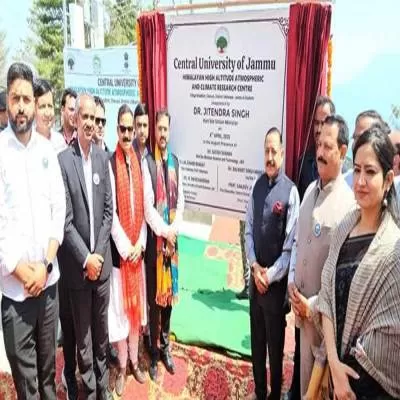
Mumbai, April 10 -- India took a major step forward in climate science yesterday with the inauguration of its first-ever "Himalayan High Altitude Atmospheric and Climate Research Centre" at Nathatop, Jammu & Kashmir. Union Minister Dr. Jitendra Singh, who oversees multiple science and technology portfolios, called the new centre a "gateway" into Himalayan climate research and a marker of India's rising global stature in the field.
Located 2,250 meters above sea level, the facility will focus on atmospheric studies in the north-western Himalayas-an area with minimal pollution and ideal conditions for high-precision climate data. The project is a joint effort between the Ministry of Earth Sciences, the J&K Forest Department, and the Central University of Jammu.
At the launch, Dr. Singh also flagged off ICE-CRUNCH, a collaborative Indo-Swiss project studying ice-nucleating particles and cloud condensation nuclei. The research will involve scientists from both India and Switzerland's ETH Zurich, and is expected to shed light on how aerosols impact clouds and precipitation patterns in the Himalayas.
Dr. Singh highlighted Jammu & Kashmir's strategic advantage for climate research and said that the new centre places India at the forefront of global environmental studies. He pointed out that India's leadership in climate action, bolstered by initiatives under Prime Minister Modi, is gaining international credibility.
The Centre will serve as a long-term research hub under the World Meteorological Organization's Global Atmospheric Watch programme and collaborate with the India Meteorological Department to feed into global climate models. It will also offer training to young scientists, host climate workshops, and build capacity in atmospheric science.
The Minister noted the government's broader climate push, including new weather radars in J&K, a seismological observatory in Udhampur, and a major budget hike for climate research under Mission Mausam. He also referenced the Aroma and Floriculture Missions as examples of how Himalayan initiatives are contributing to both environmental and economic goals.
"This is more than a research station," Dr. Singh said. "It's a symbol of India's commitment to the planet and to future generations."
Published by HT Digital Content Services with permission from Construction World.
